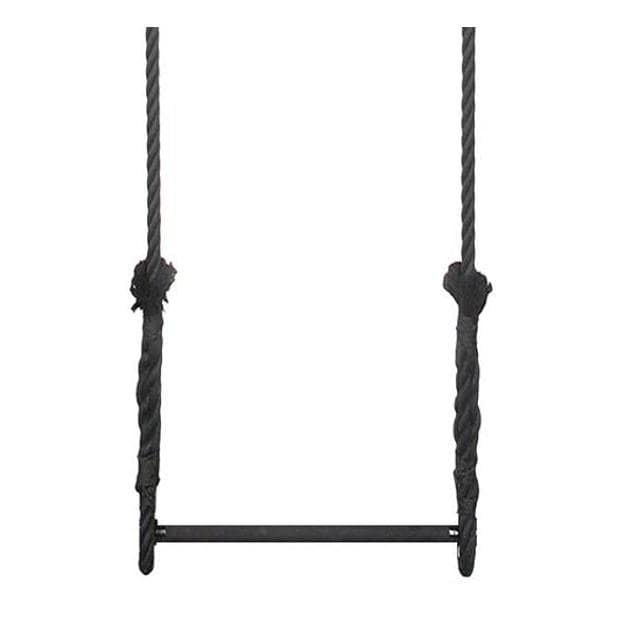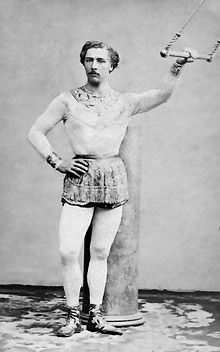The history of trapeze artists is a tale of innovation, artistry, and fearless performances. From its inception in the mid-19th century to its current role in modern aerial arts, trapeze has enchanted audiences worldwide. Let’s dive deeper into the evolution of trapeze, exploring its milestones, influential figures, and its enduring impact on circus performances and acrobatics.
What is Trapeze? Exploring Its Origins and Early Use
A trapeze is a piece of equipment that is used in Aerial Acrobatics. It consists of a horizontal bar which is hung from a roof with the help of two ropes attached on each side of the bar. It is considered to be one of the most demanding aerial arts and it has got a very interesting history.

Exclusive Offer: Enjoy a 10% discount on all trapeze purchases for our valued readers. Use code ‘TRAPEZE10’ at checkout to claim your savings. Click on the image to buy
The History of Trapeze Artists: Jules Leotard’s Legacy
During the summer of 1856, a French young gymnast named Jules Leotard had a moment of inspiration while relaxing in his father’s indoor swimming pool. He noticed a line of ropes hanging from the ceiling and attached a horizontal bar to create a makeshift chin-up bar.
Being an experienced gymnast, Jules began executing numerous acrobatic acts over the safety of his swimming pool. Later that year, he presented the first trapeze act ever in Toulouse, his birth town, using mattresses stuffed with hay for safety.
1859
By the summer of 1859, Jules had expanded his performance repertoire and created what we now know as the flying trapeze. On November 12th, 1859, during a performance in Cirque Napoleon in Paris, Jules swung from one trapeze to the other, captivating the audience. This act, called “La Course aux Trapèze,” lasted for 12 minutes. Initially, two trapeze bars were used, gradually increasing to five.

Jules Leotard performing trapeze act
Since then, trapeze performances have become an integral part of the circus repertoire. Jules Leotard not only founded trapeze but also pioneered dangerous circus performances, including acts with wild animal tamers and acrobats. He also left a lasting legacy with the introduction of the gymnastics bodysuit (leotard), named after his surname. He used to wear a bodysuit made of wool so that he could have freedom of movement and avoid the risk of getting a piece of cloth entangled with the ropes. Unfortunately, Leotard was not able to reap the benefits of his success because he allegedly died from typhus or cholera at the age of 28 in 1870.
The Avant-Garde Act: El Niño Farini and the Tambour Aerial
In a captivating display of talent and fearlessness, 8-year-old Samuel Wasgate, known as El Niño ‘the boy’ Farini, took to the stage in 1866 at the Chelsea Pleasure Gardens. His mesmerizing act, known as Le Tambour Aerial (the Aerial Drummer), left spectators in awe as they witnessed a young boy suspended in the air, skillfully playing his tambourine while balancing on his neck.

Samuel Wasgate (aka El Niño ‘the boy’ Farini)
The Role of Safety Nets in the Evolution of Trapeze History
Safety nets played a pivotal role in the history of trapeze artists, marking a major milestone in aerial acrobatics. Safety nets were introduced in the world of trapeze in the mid-19th century, providing performers with a crucial safety measure during their daring aerial acts. The exact year of their introduction is not documented, but their presence became increasingly common as the popularity of trapeze grew. These safety nets allowed acrobats to push the boundaries of their performances, knowing that there was a protective layer to catch them in the event of a fall. The introduction of safety nets marked a significant milestone in the evolution of trapeze, ensuring the safety and well-being of performers and enabling them to push the limits of their artistry with greater confidence.
Flying Trapeze: A Turning Point in the History of Trapeze Artists
In the years that followed, a second person was added to the Flying Trapeze performances. His role was to catch the arms of the other acrobat when he swung from the first trapeze to the second while he hung from the second trapeze.
1897
In 1897, a significant milestone was achieved in trapeze history when the first double somersault, transitioning from one trapeze to another, was successfully executed. Building on this daring feat, 18-year-old Lena Jordan accomplished an extraordinary triple somersault, a highly perilous maneuver that garnered the Italian acrobats’ designation of “salto mortale” or “the deadly leap.”
1975
In 1975, an incredible achievement was accomplished by Don Martinez, who shattered the triple somersault record by executing an astonishing 3.5 somersaults. His remarkable feat pushed the boundaries of trapeze artistry and left a lasting impact on the world of aerial acrobatics.
The Death-Defying Quadruple Somersault: A Leap into Circus History
1982
On July 10th, 1982, Miguel Vazquez, a remarkable performer from the Ringling Brothers, accomplished a groundbreaking feat in the world of trapeze. In front of a mesmerized crowd of 7000 spectators in Tucson, Arizona, Vazquez achieved the first-ever quadruple somersault, defying gravity and spinning at an astonishing speed of over 80 miles per hour. His daring and skill captivated the audience, solidifying his place in trapeze history.
It is worth noting that there were accounts of Ernie Clark successfully performing the quadruple somersault during rehearsals, although he was unable to replicate it in front of an audience.
2013
In a remarkable display of skill and athleticism, Han Ho Song, a talented performer from South Korea, achieved a remarkable milestone in the world of trapeze. In 2013, during a performance in Stuttgart, Germany, Han Ho Song astounded the audience by successfully executing an extraordinary feat – not just four, but an incredible FIVE somersaults! This breathtaking accomplishment pushed the boundaries of what was thought to be possible in trapeze, showcasing the incredible strength, precision, and sheer determination of this exceptional aerial artist. Han Ho Song’s achievement stands as a testament to the continuous evolution and innovation in the world of trapeze, inspiring future generations of performers to reach even greater heights.
Fascinating Facts: The Rise and Fall of Trapeze in Gymnasiums
Trapeze was a popular activity in gyms until the 1930s when it was banned due to safety precautions.
The rise and fall of trapeze in gymnasiums is a captivating chapter in the history of this aerial art form. Once a beloved activity for fitness enthusiasts, trapeze faced a significant setback in the 1930s when it was prohibited in gyms due to safety concerns. The daring nature of trapeze, with its high-flying acrobatics and intricate tricks, posed risks that were deemed too great for traditional gym settings.
The ban on trapeze in gyms marked a turning point, as the focus shifted to other forms of exercise and fitness activities. However, the allure and thrill of trapeze continued to captivate audiences in circus performances and specialized aerial arts schools. Over time, trapeze evolved into a distinct discipline within the world of aerial acrobatics, attracting dedicated practitioners and awe-struck spectators.
Gina Lollobrigida in “Trapeze”
One of the most iconic portrayals of trapeze artistry on the big screen came in the 1956 film “Trapeze” starring Gina Lollobrigida as Lola. In this captivating movie, Lollobrigida’s performance as Lola added authenticity and excitement to the story, showcasing her acting prowess alongside daring aerial acrobatics. The film beautifully captured the allure and challenges of the trapeze world, highlighting the skill, dedication, and risks involved in this mesmerizing art form. “Trapeze” exemplifies the enduring popularity and fascination with trapeze, as it has captured the imagination of audiences to the extent of inspiring a feature film dedicated to its captivating world of daring acrobatics and human drama.

Gina Lollobrigida as Lola in “Trapeze” movie (1956)
Modern Trapeze Artists: Creativity and Discipline Redefined
Today, trapeze has found a new resurgence, with specialized trapeze schools and studios offering training for both recreational enthusiasts and aspiring professionals. These dedicated spaces provide a safe and controlled environment for individuals to explore the artistry and athleticism of trapeze. While the ban on gyms may still be in place, trapeze has found a new home where its boundaries can be pushed, and its captivating performances can continue to inspire and amaze.
As we reflect on the rise and fall of trapeze in gymnasiums, it serves as a reminder of the inherent risks and challenges that come with this art form. The ban was a necessary precaution to ensure the safety of individuals in a gym setting. However, it is also a testament to the incredible feats and daring acts that make trapeze such a unique and exhilarating discipline.
Epilogue: Celebrating the History of Trapeze
The history of trapeze artists reflects their innovation, dedication, and constant pursuit of breathtaking performances. From Jules Leotard’s groundbreaking acts to the jaw-dropping somersaults and high-flying tricks of modern trapeze artists, this art form has continued to captivate and inspire audiences around the world. Today, the trapeze is not only a symbol of creativity, discipline, and circus prestige but also a testament to the indomitable spirit of human potential. Explore the world of trapeze, embrace the thrill of flight, and be part of the legacy that continues to redefine the limits of aerial acrobatics.
To fully appreciate the artistry and versatility of trapeze, it is essential to explore the different types of trapeze apparatus. Discover the diverse forms of trapeze and their unique characteristics in our article on the five trapeze types.








